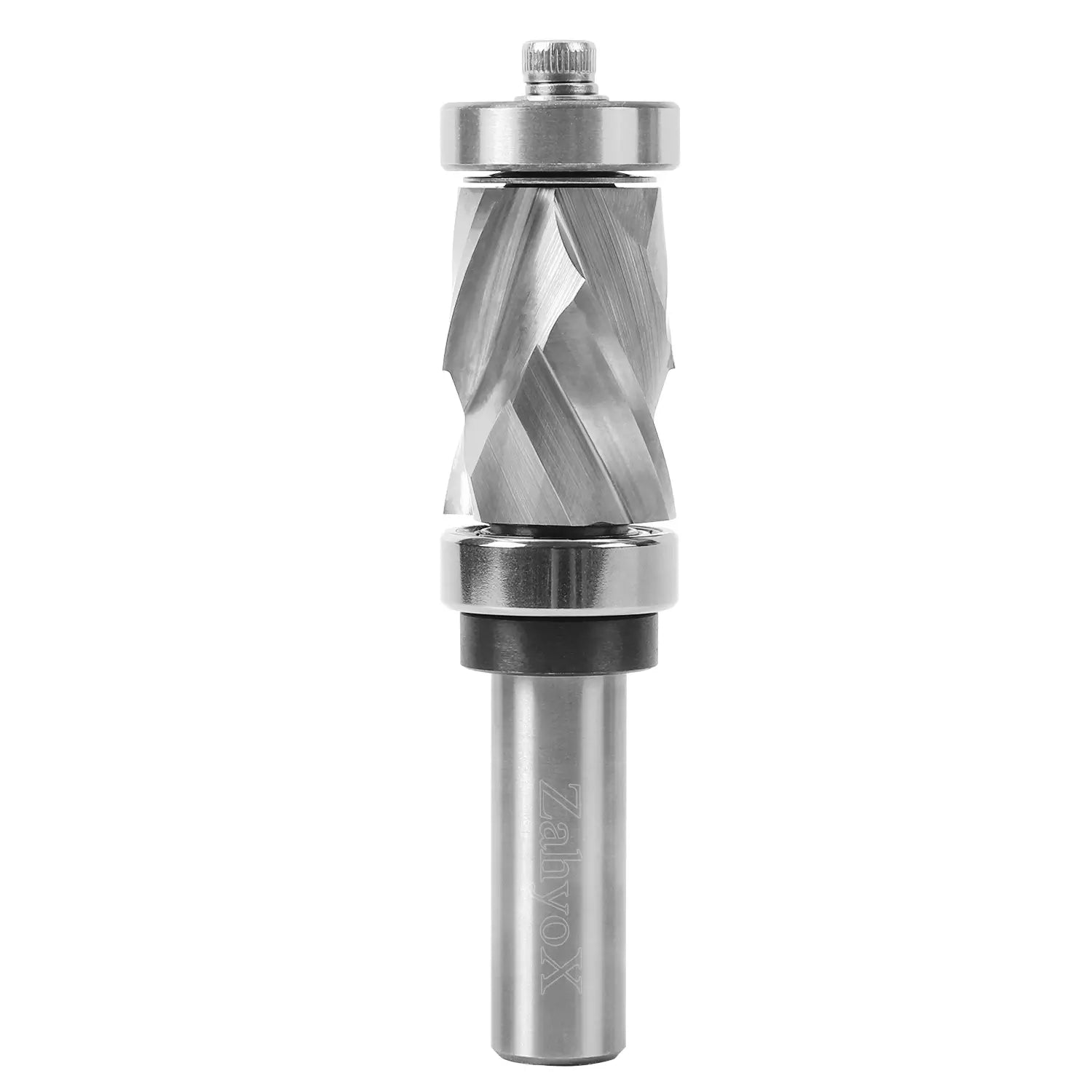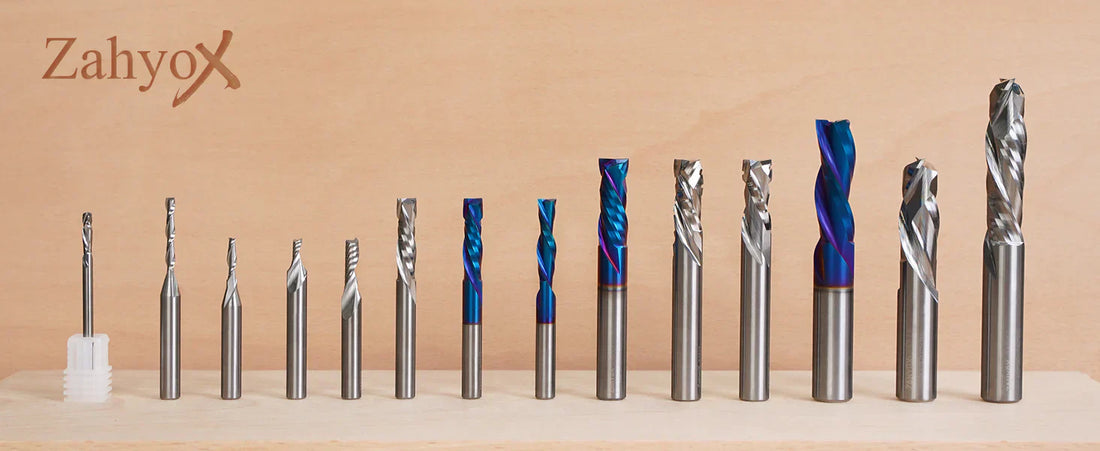CNC routers have revolutionized woodworking, offering precision and efficiency that traditional methods can't match. When it comes to cutting plywood, the choice of router bits is crucial to achieving clean, smooth cuts and prolonging tool life. In this article, we’ll explore the best CNC router bits for cutting plywood, ensuring your projects are top-notch.
Why Choosing the Right Router Bit Matters
Plywood, with its layered construction, can be challenging to cut cleanly. The right router bit will minimize tear-out, ensure smooth edges, and extend the lifespan of the bit and the machine. Factors to consider include bit material, geometry, and coating.
Top CNC Router Bits for Cutting Plywood
1. Upcut Spiral Bits
Advantages: Upcut spiral bits are a favorite for plywood cutting due to their ability to remove chips efficiently and produce clean edges. The upward spiral action pulls the material away from the cutting surface, reducing the risk of tear-out.

Best Uses: These bits are ideal for through-cuts where the bottom side finish is less critical.
2. Downcut Spiral Bits

Advantages: Downcut spiral bits push the material downwards, preventing the top layer of the plywood from splintering. This makes them perfect for cuts where the top surface finish is crucial.
Best Uses: Excellent for surface cuts, grooves, and dados.
3. Compression Bits

Advantages: Compression bits combine the benefits of both upcut and downcut bits. They have an upcut section at the tip and a downcut section on the upper part. It compresses the plywood layers towards the center and minimizing tear-out on both surfaces.
Best Uses: Best for full-depth cuts where both the top and bottom surfaces need to be clean.
4. Tapered Ball Nose Bits

Advantages: Tapered ball nose bits offer exceptional detail and smooth finishes, particularly useful for 3D carving on plywood. The tapered design reduces the risk of breakage and allows for deeper cuts.
Best Uses: Ideal for detailed 3D carvings and intricate designs on plywood.
5. Surfacing Bits
Advantages: Surfacing bits are designed to plane the surface of plywood, ensuring it is flat and smooth. These bits are perfect for preparing the plywood before starting detailed cuts.
Best Uses: Perfect for flattening large plywood sheets and preparing surfaces for further machining.
6. 45-Degree V-Groove Bits
Advantages: 45-degree V-groove bits are perfect for creating decorative edges and engraving on plywood. They provide sharp, precise cuts and add a professional touch to your projects.
Best Uses: Ideal for decorative work, signage, and engraving.
Material and Coating Considerations
The material and coating of your router bit can significantly impact its performance and durability. Here are some top choices:
Non-Coated Bits
These bits are economical and suitable for a variety of applications. However, they may wear out faster compared to coated bits, especially when used on abrasive materials like plywood.
nACo Coated Bits
Bits with a nACo (nanocomposite) coating offer superior hardness and heat resistance. The coating reduces friction, extends tool life, and allows for faster cutting speeds. These bits are ideal for high-volume production and demanding applications.
Number of Flutes: How It Affects Cutting Performance
The number of flutes on a router bit plays a significant role in cutting performance and finish quality. Here's how:
Single-Flute Bits
Advantages: Single-flute bits offer the highest chip clearance, making them ideal for cutting softer materials and achieving faster feed rates. They are less prone to clogging and generate less heat, which is beneficial for cutting plywood.
Best Uses: Suitable for high-speed cutting and scenarios where maximum chip ejection is necessary.
Two-Flute Bits
Advantages: Two-flute bits provide a balance between cutting speed and finish quality. They offer decent chip clearance while producing a smoother finish compared to single-flute bits. These are commonly used for a variety of cutting tasks in plywood.
Best Uses: Ideal for general-purpose cutting, providing a good compromise between speed and surface finish.
Three-Flute Bits
Advantages: Three-flute bits produce a finer finish due to the increased number of cutting edges. They can operate at higher speeds while maintaining a good balance between material removal and surface quality.
Best Uses: Best for achieving a smoother finish on plywood surfaces, particularly for detailed and decorative cuts.
Four-Flute Bits and Higher
Advantages: Bits with four or more flutes are designed for slower feed rates and finer finishes. They remove less material per pass but produce the smoothest surface finish among all flute configurations.
Best Uses: Suitable for finishing passes where a high-quality surface finish is paramount.
Tips for Cutting Plywood with CNC Router Bits
- Proper Feed Rate and Speed: Adjust your CNC router’s feed rate and spindle speed according to the bit manufacturer’s recommendations. Too fast or too slow can cause poor cut quality and reduce bit life.
- Clean and Sharp Bits: Ensure your bits are clean and sharp. Dull bits can cause tear-out and burn the plywood.
- Use Sacrificial Boards: Placing a sacrificial board beneath the plywood can help achieve cleaner cuts and protect your CNC machine’s bed.
Conclusion
Selecting the right CNC router bit for cutting plywood is essential for achieving high-quality results. Upcut and downcut spiral bits, compression bits, tapered ball nose bits, surfacing bits, and 45-degree V-groove bits each offer unique advantages depending on the specific needs of your project. By considering the bit material, coating, flute number, and following best practices, you can ensure clean, precise cuts and extend the life of your tools and machine.
Further reading/guide:


